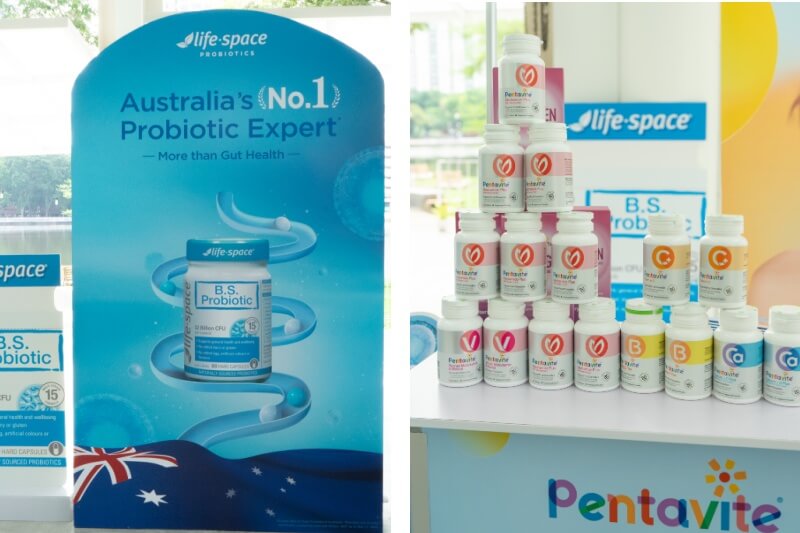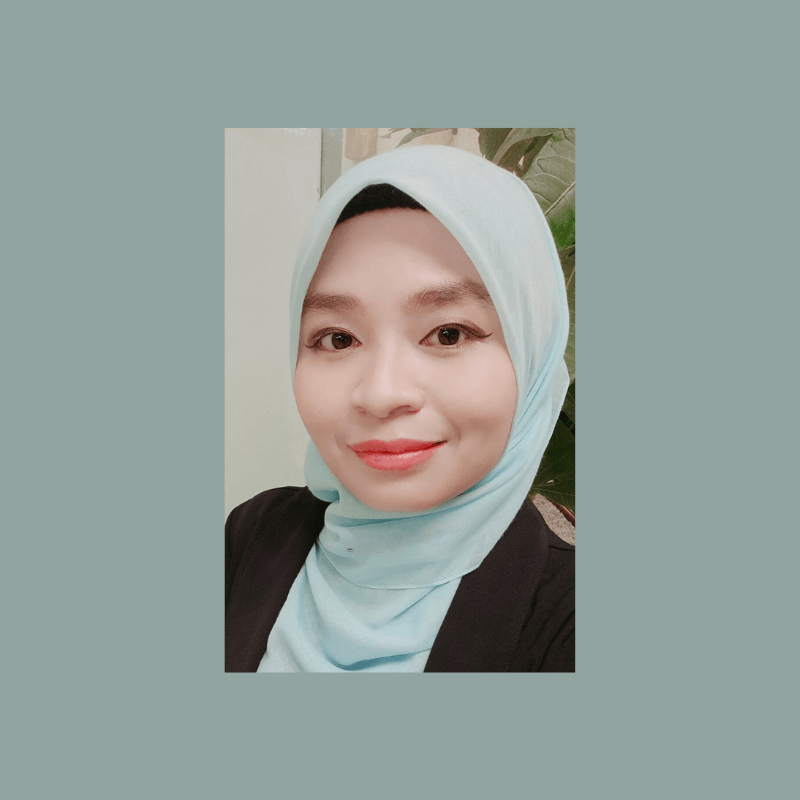-
![img]()
Gen Beta: The Rise of a New Generation
Zakwan Shah
January 02, 2025
4 min
It seems only yesterday that the world was making a fuss about the birth of Gen Alphas, babies born between 2010 to 2024.
These children not only grew up in a wholly digital era, but were the first to experience childhood in the age of the world's worst pandemic.
From January this year to December 2040, we'll see the rise of a new generation: Gen Beta.
Here's what you should know about them.Meet Some of the World's First Gen Beta Babies

In Malaysia alone, there's at least 55 babies born on the first day of 2025 so far.
There's 20 babies from Negeri Sembilan, 19 from Pahang, 6 from Putrajaya, 6 from Perlis and 4 from Melaka.
And there's no doubt that more babies will born in this month and more soon to come.
If you're also expecting a Beta Baby, here's what you should maybe take note of.Interesting Facts About Generation Beta

The first thing to note is that Generation Beta will most likely to be born to younger millennials and older Gen Z's.
They are also the first generation who will most likely live to see the dawn of the 22nd century.
Gen Betas are also born in the era of artificial intelligence and will most likely will influenced by its progress and advancement.
They may also be the first generation to part of Earth's first space exploration programme.
By the year 2035, they will make up almost 16% of the human population.
Unfortunately, Gen Beta is also born in the era of massive social, political and economic upheavals.
These children will also live through the worst climate crises the world has ever seen.
Because of all the flaws and injustices that they grew up seeing, Gen Beta will also be the forerunners in massive global changes.
These include issues like gender equality, human rights, affordable healthcare, freedom of speech and many others
While these sound like 'predictions', they are more like expectations. Hopes and dreams that we the previous generations have for the future descendants in helping build a better world.What Gen Beta Will Be Like

While its far too soon to predict what this new generation of children will be like, experts like Mark McCrindle, who coined the term Gen Alpha (and wrote a book about it), can't help but weigh in.
The social researcher and futurist is saying that despite all this fuss, Gen Beta probably won't be that much different from Gen Alpha.
However, key things will shape their upbringing in more drastic years depending on how the world will look like in a few decades.
The first is that Gen Beta will be exposed to much more technology than any generation has ever been before.
Electronic devices, AI and virtual reality will be a part of their daily lives, from education to healthcare to socialising.
This means that they will most likely be in front of a screen throughout most of their lives. This will make parenting that much harder for millennials and Gen Zs who are already using devices 24/7.
But that's not all.
With the rise of neurodiversity in the world, you can expect a significant portion of Gen Beta to be on the autism spectrum or be born with ADHD or Attention Deficit Hyperactivity Disorder.
Even now, many adults are finding out that they have some form of undiagnosed neurodiversity after going for a screening (which means these statistics are even more inaccurate).
There are apparently many people with neurodiversity that have flown under the radar.
It's important to remember that neurodiversity is not a 'mental illness'.
It is also rarely considered a disability or a disease.
It is simply a different way of looking at the world (and something that future parents of Gen Beta need to take note of).Parenting Gen Beta

If you've ever seen or read about Mindy, the future of humanity, you'll see a glimpse of what awaits us as technology continues to be integrated into our lives year after year.
From claw-like hands and hunched backs, to the aptly named 'Tech Neck', our use of laptops and smart devices are taking a toll on our bodies.
As we are already experiencing with Gen Alphas, who are glued to their phones all the time, the reality will be twice as worst if the pattern repeats.
While your kids may not be able to avoid technology for school, it's important that parents reserve plenty of time for outdoor activities.
It is now more important than ever to adhere to a strict limited or no screen time - to ensure that our little ones continue to be healthy.
If your child does is neurodivergent, then it's important to accommodate their needs and learn as much as you can about their condition before labelling certain actions as 'bad behaviour' or 'being naughty'.Gen Beta: A New Generation

While it is much too soon to predict the other challenges that await Generation Beta, let's deal with those that we can change.
We cannot wholly expect the new generation to pick up on our slack and fix a world that previous generations ruined.
So, let's make the planet a better place for our children to live in for the next foreseeable future while they are still young.
Fight climate change and avoid overconsumption.
Practice compassion and kindness to your fellow man.
Be a good example.
With any luck, this new generation will leave the world a little better than they found it, which is what any of us could ever hope for.
Congratulations to all the parents or parents-to-be of Gen Beta babies!
For more insightful stories and fun recipes, stay tuned to Motherhood Story!
-
![img]()
Wrap Up The Year With A Sprinkle of Wellness at the Life-Space and Pentavite Healthy Walk
Eisya Ereena
January 02, 2025
2 min
To commemorate a year of adopting healthy habits and the resolution to be healthier in the new year, this December, Life-Space has partnered with the Grow & Glow Mama Community to host the VITALITY IN EVERY SPACE HEALTHY WALK.
This event aims to promote overall wellness and gut health by incorporating light physical activities.
Additionally, there were health workshops by a circadian health and functional medicine expert to talk about gut health and hormone wellness, where participants who are mostly mothers explored the vital connection between a healthy gut and their overall wellbeing, as well as to inspire participants to close the year with positivity and a renewed commitment to self-care.
Over the past year, Life-Space, Australia’s No. 1 probiotics brand and winner of the Australian Export Award in the e-commerce category, has been dedicated to educating Malaysians on the importance of a healthy and happy gut.
Gut health plays a critical role in overall wellness, from influencing digestion and immune systems to boosting moods - and for mothers juggling busy lifestyles, taking the time to maintain a healthy gut can be especially difficult. Hosted in conjunction with the Grow & Glow Mama Community, this wellness walk brings together healthy activities and education in one fun morning.
Hosted in conjunction with the Grow & Glow Mama Community, this wellness walk brings together healthy activities and education in one fun morning.
Recognising this challenge among young mothers in Malaysia, Life-Space collaborated with the Grow & Glow Mama Community to directly offer women practical insights into how Life-Space probiotics and Pentavite’s nutritional supplements can empower them to lead healthier, more balanced lives.
At the event, another trusted Australian brand, Pentavite, was also introduced.
For over eight decades, Pentavite has been providing high-quality vitamins and dietary supplements.
This year, the brand has launched its very-first skincare supplements: Pentavite Niacinamide Plus with Vitamin C and E Tropical Fruit Chewable and the Pentavite Collagen Peptide Glowing Beverage.
More than just beauty supplements, these products are lifestyle essentials for modern women.
Pentavite Niacinamide Plus focuses on skin health by providing UV protection, reducing dark spots, and promoting a natural whitening effect, this chewable supplement empowers women, especially mothers - to invest in their health in accessible and meaningful ways, supporting overall wellbeing while promoting a radiant, glowing lifestyle.
A trusted brand in Australia for over 80 years, Pentavite continues to redefine enjoyable nutrition with its trusted range of high-quality supplements for all ages.
With its newly launched beauty-focused products, Pentavite has introduced new ways to bring women’s health and wellness into modern, more accessible channels.
For more information about Life-Space and Pentavite, please visit their official website at: https://www.lifespaceprobiotics.com
Disclaimer: The information provided in this article is for informational purposes only and should not be considered as medical advice from Motherhood. For any health-related concerns, it is advisable to consult with a qualified healthcare professional or medical practitioner.
For more insightful stories and fun recipes, stay tuned to Motherhood Story!
-
![img]()
Think Twice Before Sharing That Photo: How Malaysian Parents Are Protecting Their Kids Online
Eisya Ereena
January 03, 2025
4 min
The topic of 'sharenting' isn’t new.
It’s been debated countless times before.
Yet, in today’s hyper connected digital age, its importance has only grown, making it a conversation worth revisiting.
From a baby’s first steps to their super cute super messy 1st smash cake birthday moments, sharing milestones online has become second nature for many parents (yes, myself included).
It’s a way to connect, celebrate, and treasure precious memories.
But in this digital age, where information travels faster than ever, the line between sharing and oversharing can blur and that’s where the challenge lies.
The Unavoidable Era of Sharenting

It’s almost unavoidable.
Whether you’re a parent who loves sharing daily snapshots or someone who occasionally posts about your child’s milestones, social media has become a digital scrapbook for many families, a space to celebrate memories and stay connected with loved ones, especially those far away.
However, in Malaysia, an increasing number of parents are rethinking their approach to sharing.
Concerns about privacy, safety, and cultural sensitivities are leading to more intentional practices.
From blurring children’s faces to posting only partial glimpses like little hands holding a toy or a candid shot from behind, parents are finding creative ways to preserve their child’s privacy.
Some content creators even opt for completely faceless accounts to curate their content.
This isn’t just a passing trend,
It’s a conscious effort to safeguard children’s digital identities in a world that’s becoming more connected every day.Why Are Parents Becoming More Cautious?

- Digital Security Concerns: The internet is an endless pit hole of unpredictability. Parents are increasingly worried about their child’s images being misused, whether through identity theft, unauthorised use in advertisements, or falling into the wrong hands.
- Privacy Awareness: As social media platforms evolve, so does awareness about privacy. Parents are recognising that what they post today could have implications for their child’s future, from school applications to professional careers. Nobody wants their child’s embarrassing bathtub photo resurfacing years later.
- Cultural Sensitivities: In Malaysia’s multicultural society, the way we approach privacy can differ, but a shared emphasis on modesty and respect plays a significant role. This cultural perspective influences decisions like blurring faces or avoiding sharing too much personal information about children.
- Protecting Autonomy: Children are now treated as individuals with their own rights, including the right to decide how they’re represented online. Some parents are holding back on sharenting to let their kids grow up and make those decisions themselves.
Navigating the Balance: Sharing Responsibly

So how do we, as parents, strike a balance?
How can we share moments without compromising our children’s safety or privacy?
Here are a few practical tips to navigate sharenting in the digital age:- Think Before You Post: Ask yourself a few key questions: Does this post reveal too much? Could this embarrass my child in the future? Am I oversharing personal details? Taking a moment to pause and reflect can make all the difference.
- Limit Identifiable Details: Avoid posting information that could identify your child’s current location or daily routine. For instance, skip tagging their school or sharing photos in recognisable uniforms.
- Blur Faces or Share Partial Shots: If you’re keen to share a moment, consider showing only hands, feet, or the back of your child’s head. This will still let you share the essence of the moment while safeguarding their identity.
- Check Privacy Settings: Ensure your social media accounts are set to private and only trusted friends and family can see your posts. Regularly review your follower list to ensure it’s up to date.
- Have Open Conversations: As your child grows, involve them in the decision making process. Ask if they’re comfortable with you sharing a photo or story about them. This helps them understand their rights to privacy early on.
- Create a Family Album: Instead of sharing every moment online, consider creating a private digital archive or photo album. This allows you to document your child’s milestones without exposing them to the public eye.
Protecting Our Children: A Shared Responsibility

Ultimately, sharenting isn’t just about what parents choose to share.
It’s a collective responsibility that extends to caregivers, relatives and friends.
As we step into 2025 and embrace a more advanced age of technology, it’s important to remember that while sharing adorable moments online can be heartwarming, we must tread carefully, especially when it involves children who aren’t ours.
Before snapping a photo or uploading it to social media, always seek permission from the child’s parents or guardians.
More importantly, avoid sharing images of children publicly without explicit consent.
While we may enjoy sharing updates of our children, not everyone is comfortable with their child’s photos circulating online.
Respecting each other’s boundaries and preferences when it comes to sharing online is crucial as parents.
Let's take care of our kids together, parents!
Happy New Year 2025 with love from Motherhood, mummies and daddies!
Disclaimer: The information provided in this article is for informational purposes only and should not be considered as medical advice from Motherhood. For any health-related concerns, it is advisable to consult with a qualified healthcare professional or medical practitioner.
For more insightful stories and fun recipes, stay tuned to Motherhood Story!
-
![img]()
Expert Sheds Light on Parents’ Guide to Immune Deficiencies in Children
Zakwan Shah
January 08, 2025
5 min
Immune deficiencies are conditions where the body's defence system is not able to fight off infections and diseases. It is often a serious lifelong struggle.
No parent wants to find out that their child has an immune deficiency, but it's important to help your little ones so that they can lead a long and happy life. Nazatul Amira Hamzah, Pharmacist at Primabumi Sdn Bhd
Nazatul Amira Hamzah, Pharmacist at Primabumi Sdn Bhd
We had a chat with Nazatul Amira Hamzah from Primabumi Sdn Bhd to find out more about immune deficiencies in children and steps parents can take to address this condition.Question 1: What are primary and secondary immune deficiencies?

Immune deficiencies are health conditions in which a child’s immune system is impaired, compromising their ability to identify and eliminate infections.
They typically fall into two categories: primary and secondary immune deficiencies.
Some children may outgrow their deficiencies as their immune system matures, while others may have to deal with this issue lifelong.Question 2: What are the causes of primary and secondary immune deficiencies?
A child typically inherits a primary immune deficiency from one or both parents.
Someone can acquire immune deficiencies through ways other than genetic, such as:- Infections, like HIV, measles, or COVID-19
- Immunosuppressive drugs (medications used to suppress immune responses), such as: corticosteroids, chemotherapy agents, antirejection medication (for transplant patients).
- Medical conditions, such as: cancers, chronic kidney disease, burns, severe trauma, severe nutrient deficiencies
Question 3: How do I tell if my child may have an immune deficiency?
There are many ways that immune deficiencies can present themselves.
A child with this condition will usually suffer from slow growth, weight loss, skin rashes, delayed wound healing and excessive tiredness.
Frequent gastrointestinal issues such as abdominal cramping, nausea, vomiting, and diarrhoea can also be a sign.
Be on the lookout for frequent and recurrent infections as well such as pneumonia, bronchitis, sinus infections, ear infections, meningitis, or skin infections.
You should also observe your child for the following symptoms:- Enlarged lymph glands or spleen
- Failure to thrive and/or persistent candidiasis (oral thrush) in newborns
- Inflammation and infection of internal organs
- Opportunistic infections (infections occurring due to bacteria, fungi, viruses, or parasites that normally do not cause a disease but become capable of causing illnesses when the body's immune system is weakened)
- Infections that are difficult to treat that they require several treatment courses or frequent hospitalisations
However, the symptoms above could also be caused by other health issues such as anaemia, nutrient deficiency, or hormonal imbalance.
A professional medication examination is required to determine the correct diagnosis.Question 4: How is an immune deficiency diagnosed?

Your child's doctor may perform the following tests to determine whether or not your child has an immune deficiency:- A blood test is carried out to assess the levels of infection-fighting proteins (immunoglobulins), antibodies, blood cells, and immune system cells in your child’s blood.
- Prenatal testing involves testing samples of the mother's amniotic fluid, blood, or cells from the tissue that will form the placenta (chorion) to identify any immune-related problems.
- DNA testing is used to check for a genetic defect during pregnancy. Test results enable the timely preparation for therapy immediately following birth, if required.
Question 5: At what age are primary and secondary immune deficiencies detected?

Primary immune deficiencies often manifest early in life, whereas secondary immune deficiencies can appear at any stage, depending on their triggers.Question 6: How does an immunodeficiency affect a child’s health and quality of life?
Immune deficiencies impair your child’s immune system’s ability to identify and eliminate threats.
They negatively affect your child’s health and well-being by increasing your child’s likelihood of:- Suffering from multiple allergies as well as serious illness and infection
- Experiencing recurrent or long-term infections
- Having a reduced ability to absorb and utlise nutrients
- Requiring frequent medical visits and hospitalisations that could impact their academic performance and decrease their opportunity for learning and social activities.
Question 7: How are primary and secondary immune deficiencies treated?

Treatments for both primary and secondary immunodeficiencies primarily involve:- Treating and preventing infections through the use of antibiotics, antivirals, and antifungal medications.
- Treating and preventing infections through the use of immunoglobulin replacement therapy (IVIG) to supplement missing antibodies.
- Stem cell transplantation to cure several forms of life-threatening immunodeficiency.
Question 8: What is the role of vaccination in managing primary and secondary immune deficiencies?

Vaccines can help protect your child against common infections in the short- and long-term.
However, children with severe immune deficiencies should avoid live vaccines like oral polio and measles-mumps-rubella unless a specialist recommends them.Question 9: Can probiotics help children with immune disorders?

Probiotics may help improve gut health and strengthen the immune system.
However, there are insufficient clinical studies to prove that probiotics can be significantly beneficial in children with immune deficiencies.
Talk to a healthcare professional before starting your child on any probiotic product.Question 10: As a parent, how do I help my child cope with their immune deficiencies?

Parents can help support their child’s overall immune function through various measures, including:- Encourage your child to practice good hand and dental hygiene.
- Promote a well-balanced diet to ensure your child gets all the nutrients they need to grow healthily.
- Ensure your child gets enough sleep, help them manage stress, and encourage them to stay physically active, as all these are necessary to maintain strong immune function.
- Minimise your child’s exposure to infection as much as possible by staying away from people with symptoms of infection or crowded places.
- Consult your doctor about recommended vaccinations for your child.
Source: Nazatul Amira Hamzah, Pharmacist at Primabumi Sdn Bhd
Disclaimer: The information provided in this article is for informational purposes only and should not be considered as medical advice from Motherhood. For any health-related concerns, it is advisable to consult with a qualified healthcare professional or medical practitioner.
For more insightful stories and fun recipes, stay tuned to Motherhood Story!
-
![img]()
What to Do When Your Child Refuses to Eat—Expert Tips for Parents
Zakwan Shah
February 19, 2025
5 min
Kids need lots of food to ensure they grow up fast and strong.
Good and healthy nutrition is essential during the early years of life.
But what happens when your child does not have much appetite? Nazatul Amira Hamzah, Pharmacist at Primabumi Sdn Bhd
Nazatul Amira Hamzah, Pharmacist at Primabumi Sdn Bhd
We had a chat with pharmacist Nazatul Amira Hamzah, to help parents learn more about what they can do when their kids are just not in the mood to eat.Q1: What are some common causes of children's low appetite?

The following list outlines potential causes of your child's poor appetite:- Children frequently have a decreased appetite at times of minor illness or discomfort. These may include colds, gastrointestinal problems, or teething pain.
- Excessive pressure from parents or caregivers inhibits children from enjoying their meals, leading to a distaste of specific foods.
- Many young children suffer from neophobia, a fear of trying new foods, and their parents often perceive them as fussy eaters.
- Too much intake of sugary foods and beverages can reduce a child’s appetite for nutrient-dense meals.
- In some children, refusal to eat may be an attention-seeking behaviour which indicates a problem in the parent-child relationship.
- Distractions at mealtime, as well as an emphasis on mealtime behaviours and table manners that are improper for the child's age, create a hostile environment and discourage children from eating.
- Stress caused by problems at home or school could impair children's appetite.
- Certain diseases and medications can disrupt children's normal bowel function in children, suppressing their appetite directly or indirectly.
Q2: How can parents tell the difference between regular appetite swings and more serious appetite issues?

Occasional appetite changes are common, particularly during growth spurts or following illness.
However, if the child experiences consistent weight loss, fatigue, or a lack of energy over a long period of time, this may suggest an underlying problem that requires medical attention.Q3: How can underlying health conditions that may cause a child's reduced appetite be identified?

A doctor should examine your child and obtain a full history of their eating habits, including normal portion sizes, time taken to complete a typical meal, and mealtime environment.
Certain lab tests may also be necessary to diagnose anaemia and vitamin deficiencies.
If your child shows no signs of underlying illnesses, enjoys most of their meals, and grows healthy, the problem is usually due to parents' unreasonable expectations.Q4: What medical conditions are commonly linked to reduced appetite in kids?

Health issues that can cause poor appetite in children include anaemia, hypothyroidism, chronic infections, and gastrointestinal problems.
Psychological disorders such as anxiety and depression may also play a role.Q5: Can low appetite in children be a sign of an underlying nutrient deficiency?

Yes, poor appetite can indicate underlying deficiencies in nutrients like iron, zinc or vitamins, which affect overall energy and health.
Your paediatrician may recommend tests and appropriate supplements if a deficiency is suspected.Q6: What are some examples of medicines that may interfere with appetite?
Antibiotics, medicines to treat attention deficit hyperactivity disorder (ADHD), and some antidepressants can all suppress appetite.
If this happens, you should discuss with your child’s doctor if a dosage adjustment is required or if taking the medicines with food would be helpful to minimise the drug’s side effect on appetite.Q7: Are there any common dietary habits or patterns that may be related to a child's poor appetite?

Your child is more likely to experience low appetite if they skip breakfast, continue to snack on junk food, or consume excessive amounts of liquids before meals, such as milk or juice.Q8: Are there specific food groups or nutrients that can naturally stimulate appetite in children?

Protein-rich foods (like chicken or beans), complex carbohydrates (such as whole grains), and healthy fats (e.g., nuts, seeds and oils) can increase energy and stimulate appetite.Q9: Are there over-the-counter supplements or vitamins that can help improve my child’s appetite?

You may consider the following options to help boost your child's appetite, under the guidance of your healthcare provider:- Multivitamins containing B-complex vitamins, iron, zinc, and lysine. Lysine is an essential amino acid that promotes appetite and satiety.
- Probiotics containing strains like Lactobacillus or Bifidobacterium may help promote children’s gut health and thereby improve their appetite.
- Digestive enzymes improve your child’s ability to process certain foods.
Q10: How can parents increase their child's appetite and make a healthy food plan for them?

Addressing your child’s low appetite requires a holistic approach and long-term nutrition strategies:- Choose nutritious food of appropriate texture and taste for the child’s age, and provide structured meals and snacks. As long as they grow appropriately, you should allow your child to decide how much and what they eat.
- Offer smaller, more frequent meals, with a focus on nutrient-dense foods such as avocados, eggs, and cheese, smoothies, and fortified cereals. You can always add more if your child eats everything on their plate.
- Help your child accept new foods by gradually introducing them over time and providing regular, neutral exposures.
- Limit your child's time at the table to about 20 minutes. Once mealtime is over, remove all food and serve it again at the next planned meal or snack.
- Serve nutritious snacks in between meals. However, do not give your child snacks if the timing or amount would interfere with their appetite for the following meal.
- Encourage your child to play and exercise to stimulate appetite. However, you should allow them to settle down 10-15 mins before mealtimes to ensure they are not too tired or overstimulated.
- Do not force or coax your kid to eat. Bribes, threats and punishments do not help in healthy eating.
- Do not allow any potential distractions such as toys, books or electronic devices at the table during mealtimes.
- Make mealtimes as something that your child looks forward to by creating a calm, supportive environment.
- Encourage your family members to eat together whenever possible. Eating with the family provides the toddler with a pleasurable social experience and the opportunity to learn by imitation.
- If malnutrition is a concern, you should consult with your pediatrician to see if giving your child a meal replacement designed for kids is appropriate and which product would be best for them.
Source: Nazatul Amira Hamzah, Pharmacist at Primabumi Sdn Bhd
Disclaimer: The information provided in this article is for informational purposes only and should not be considered as medical advice from Motherhood. For any health-related concerns, it is advisable to consult with a qualified healthcare professional or medical practitioner.
For more insightful stories and fun recipes, stay tuned to Motherhood Story!
Navigation
Our menu boxes are very flexible and easy to use




